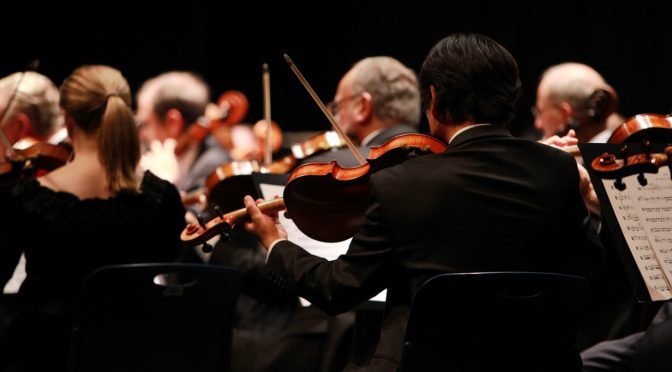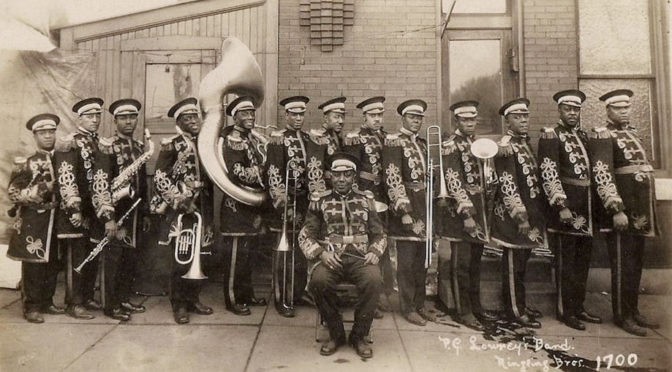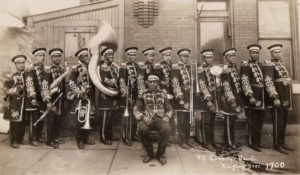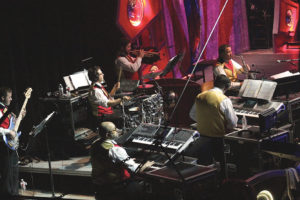by Anthony D’Amico, President Theatre Musicians Association (TMA) and members of Locals 9-535 (Boston, MA) and 198-457 (Providence, RI)
 I received many insightful comments from musicians across our Federation after my November 2017 column addressing the downsizing of touring musical orchestras. Most of the comments suggested ways to educate the public about this issue in order to have them demand larger orchestras to enhance their theatre experience. However, one colleague in Boston asked me to expand on why a larger orchestra would provide the public with a more satisfying night in the theatre. What is it about a fully staffed pit of highly skilled musicians that gives theatergoers the unquantifiable thrill that only live music can offer?
I received many insightful comments from musicians across our Federation after my November 2017 column addressing the downsizing of touring musical orchestras. Most of the comments suggested ways to educate the public about this issue in order to have them demand larger orchestras to enhance their theatre experience. However, one colleague in Boston asked me to expand on why a larger orchestra would provide the public with a more satisfying night in the theatre. What is it about a fully staffed pit of highly skilled musicians that gives theatergoers the unquantifiable thrill that only live music can offer?
Real Instruments Just Sound Better
There is no doubt that synthesizer technology has improved exponentially over the last 20 years or so. Keyboard samplers continue to get better, guitarists are using Fractal multi-effects processors more frequently, and percussionists often use CAT technology to broaden their sound palette. However, I am convinced real instruments always sound better. A sampler cannot reproduce the turn of phrase of a master oboist, the excitement generated by a lead trumpeter, or the warmth of a full string section. Perhaps these things are unquantifiable, but audiences notice. In my experience, the average patron might not be able to explain why they prefer the sound of real instruments, but they know they do.
Music Sounds Better When Musicians Play Off Each Other
We musicians have all (I hope) experienced the unique thrill of interacting musically with our colleagues. Again, it’s a sensation that is difficult to express in words. It is an important element that transforms mere sound into art. In musical theatre, I would argue that, when a larger number of musicians play off each other in a pit, the musical back and forth raises the quality of the show. There is no doubt audiences do notice.
More Is More
As mentioned in my previous article, shows originally orchestrated with larger forces often tour with a reduced complement of players. Also, when shows are revived, it is common for the scores to be reorchestrated for smaller forces. A show that once boasted a full string section, hits the road configured for few or even no players. Three trumpet books are condensed into one, and so on. Obviously this produces a thinner sounding orchestra. But, we also need to be aware of the wear and tear these reduced orchestrations exert on the players performing them. Where once a three-trumpet section shared the burden, on tour one player is handling all the trumpet duties. I’ve often heard brass and woodwind players complain that their instruments don’t leave their faces for the duration of the show, resulting in fatigue or even injury.
While the obvious reason producers reduce orchestration is financial, I would argue this practice could very well hurt their bottom line. If the audience hears a show with the large orchestra the composer intended, what will these patrons think when they attend a future production with a small ensemble? Will they notice and next time think twice before spending their hard-earned money on the ever-increasing cost of a ticket?
In a recent phone call with TMA Vice President Heather Boehm, she mentioned to me that the Lyric Opera of Chicago produces one musical theatre production per season using their full opera orchestra. A show presented with these kinds of forces in the pit produces an authentic, remarkable experience. What will patrons in attendance think the next time they see a show with an orchestra of seven musicians? I guarantee they will notice. Recently, Jesus Christ Superstar was presented live on NBC utilizing a 32-piece orchestra. Playbill, in listing the seven best things about this broadcast, ranked the use of a large live orchestra as number one.
At recent Theatre Musicians Association (TMA) conferences, we have often discussed this issue. These meetings have produced useful ideas to raise audience awareness of pit size and quality using a few simple actions. For example, if a show in your local theatre uses a large orchestra, take a few minutes to express your approval on social media or in the comment section of online reviews. Conversely, negative comments can be added to shows using small ensembles. Increasing the pit musicians’ visibility is important, and can be achieved by having musicians hand out leaflets in front of the theatre before a show, giving short bios of the talented musicians they are about to hear, and inviting patrons to come to the pit before the performance or during intermission to say hello.
Another idea is to include a clause in local theatre contracts that requires the names of the musicians be listed in the program, and even allow for short musician bios to appear alongside those of the cast. As always, I welcome your ideas. I can be reached at president.tma@afm-tma.org.








